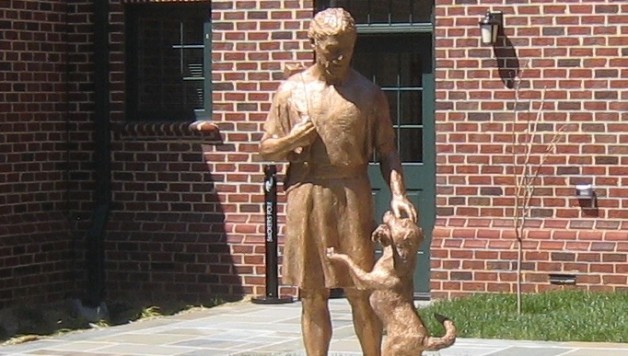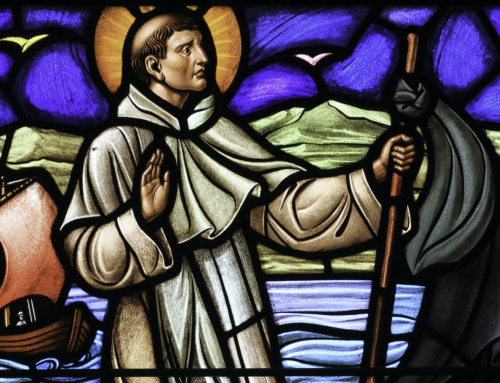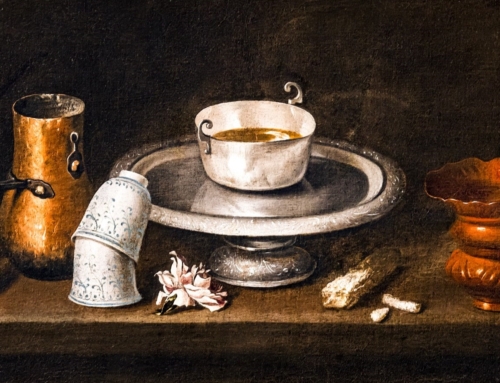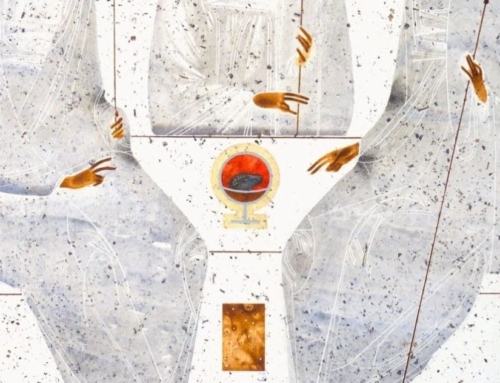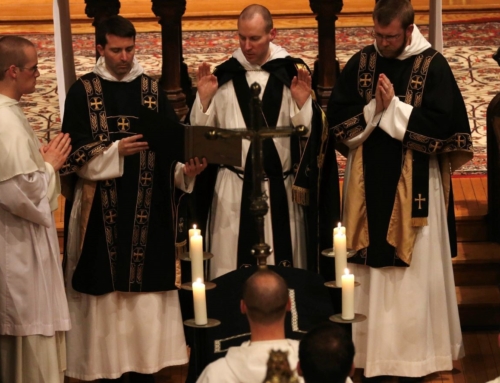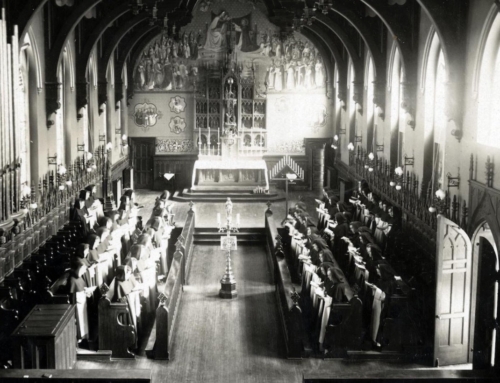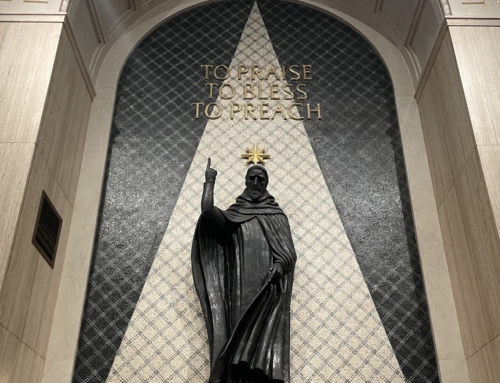In the courtyard of the Dominicans’ magnificent new priory in Charlottesville, Virginia, stands an unusual statue of St. Joseph, made by the sculptor Thomas Marsh. Marsh depicts St. Joseph just as he enters his home in Nazareth, exhausted from his day’s labor, wearing a short work tunic with a sling of tools over his shoulder. A dog bounds up to greet him, catching him in mid-stride; the dog, cast as a symbol of the Dominican Order with the torch of the Gospel in his mouth, receives a loving scratch on the head from the weary laborer.
The composition of the sculpture is remarkable for its tender expressiveness, but perhaps the most striking thing about it is the title: St. Joseph, Protector of Preachers. At first the title might seem malapropos: St. Joseph is famously silent, not uttering a word in any of the canonical Gospels, so is it merely an act of pious self-promotion for members of the Order of Preachers to call St. Joseph the Protector of Preachers?
Happily, no. The statue itself points toward the deep reality signified by its title. St. Joseph has his head turned down and slightly toward the dog, but his eyes are cast elsewhere, suggesting that he has caught sight of someone he’s even happier to see: the child Jesus, perhaps, running behind the family dog to welcome his foster father and Protector home. The whole composition of the statue takes its power from the implied presence of Christ: this child who is the Son of Man is the reason St. Joseph has wearied himself with labor, and this child who is the Son of God is the reason the dog comes running to his master with the light of Christ quite literally on his lips. The simple meeting between a man and his dog is transformed into an image of the life of the preacher by the hidden presence of Jesus.
Pope Francis spoke about a similar reality in the homily at the beginning of his Petrine ministry, reflecting on St. Joseph’s vocation as Protector:
How does Joseph respond to his calling to be the protector of Mary, Jesus and the Church? By being constantly attentive to God, open to the signs of God’s presence and receptive to God’s plans, and not simply to his own… Joseph is a “protector” because he is able to hear God’s voice and be guided by his will; and for this reason he is all the more sensitive to the persons entrusted to his safekeeping.
This glorious characterization of St. Joseph is, in many ways, the inner meaning of all Christian life, but it bears special importance for members of the Order of Preachers, who have sworn their lives to bear witness to Jesus Christ. Although preachers may speak with voluminous eloquence, their call is nonetheless a hidden one; the fruit of preaching is grace, a meeting with Christ in the hearts of the listeners, and only rarely can the preacher catch a glimpse of the marvels God has wrought through his servant. The preacher must pour himself out for the people that he meets every day, responding to their deepest needs and desires, guided by the silent promptings of the Holy Spirit, who speaks in “sighs too deep for words” (Rm 8:26).
This intimate vocation impels the preacher to go out in the world and speak of Christ—“Woe to me if I do not preach the gospel!” (1 Cor 9:16)—but it also impels him back to the silence of the hidden life with Christ, the source and end of all his ministerial action. The inner dynamic of Dominican life is what Marsh’s statue captures so beautifully: having spent himself in service of Christ, St. Joseph returns to the peace of his home, to be filled once again by the presence of that same Christ.
The vocation that St. Joseph lived as Protector is what the Dominican attempts to live as Preacher. The statue at the heart of this priory is a physical representation of the mission for which it exists, a prayer cast in bronze.
Saint Joseph, Protector of Preachers, pray for us.
✠
Image: Thomas Marsh, St. Joseph, Protector of Preachers. Photographed here is the temporary plaster model of the statute; the final bronze version is currently being cast.

